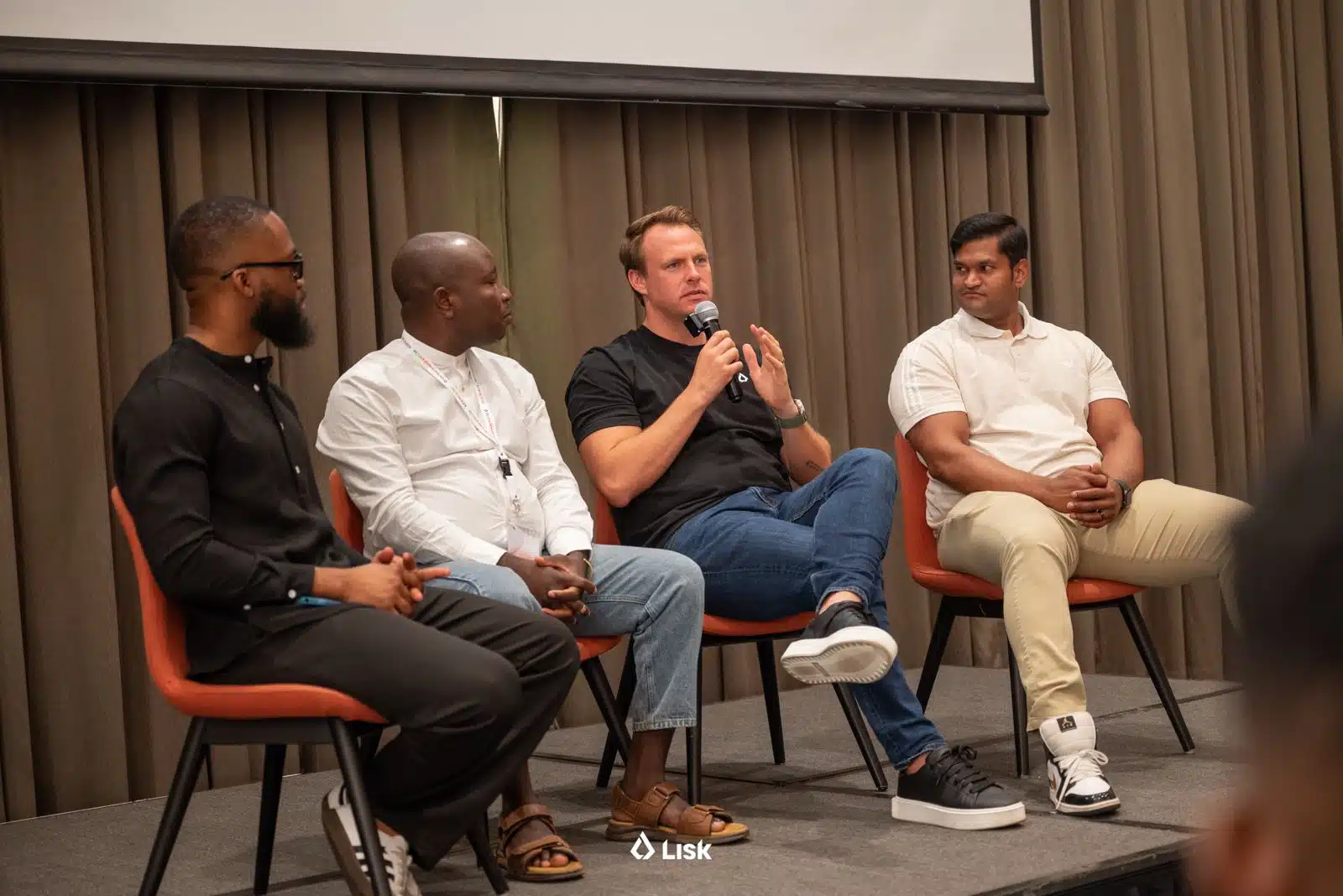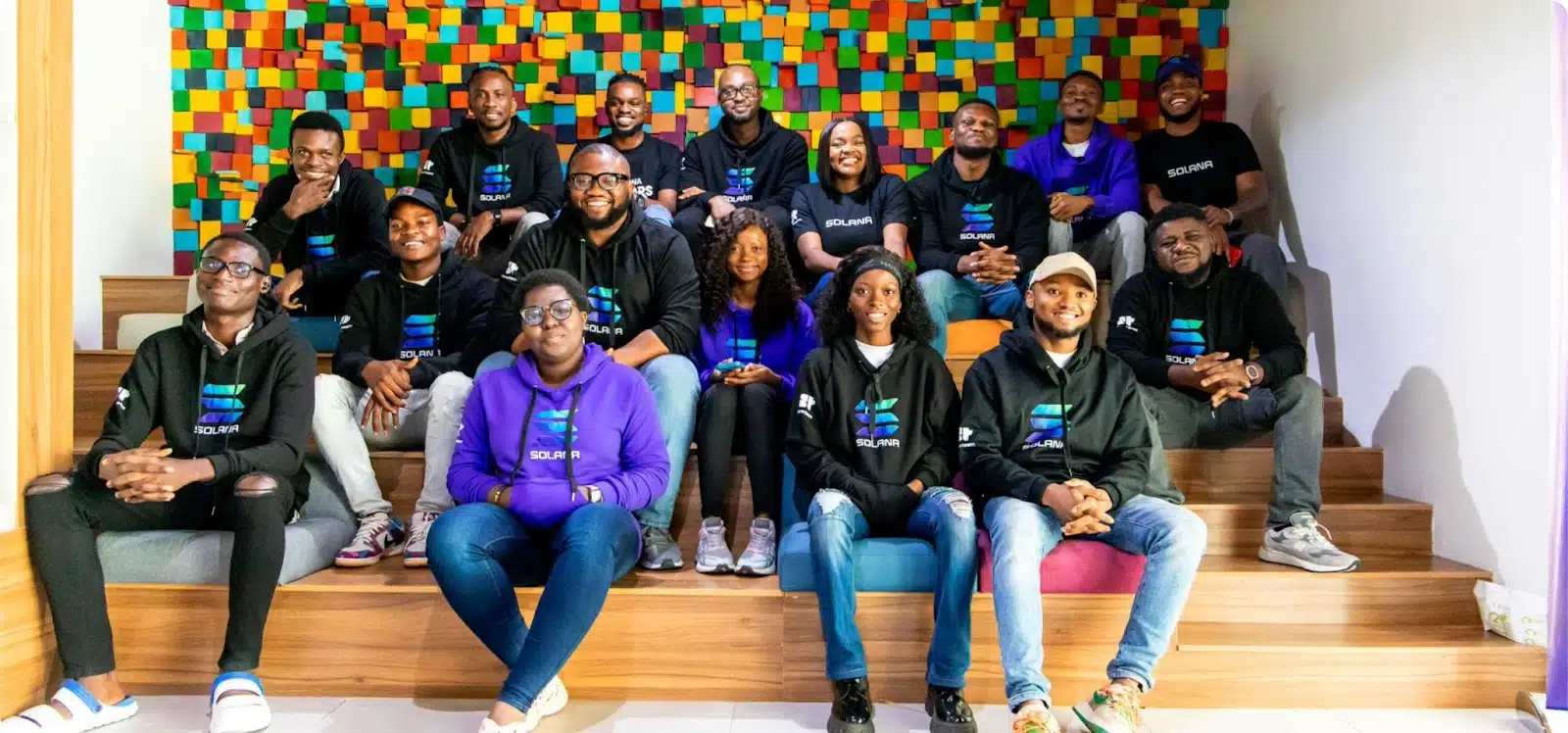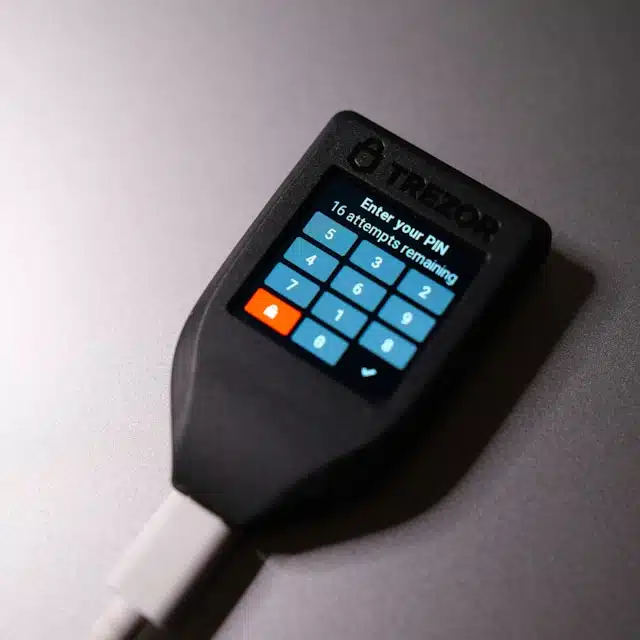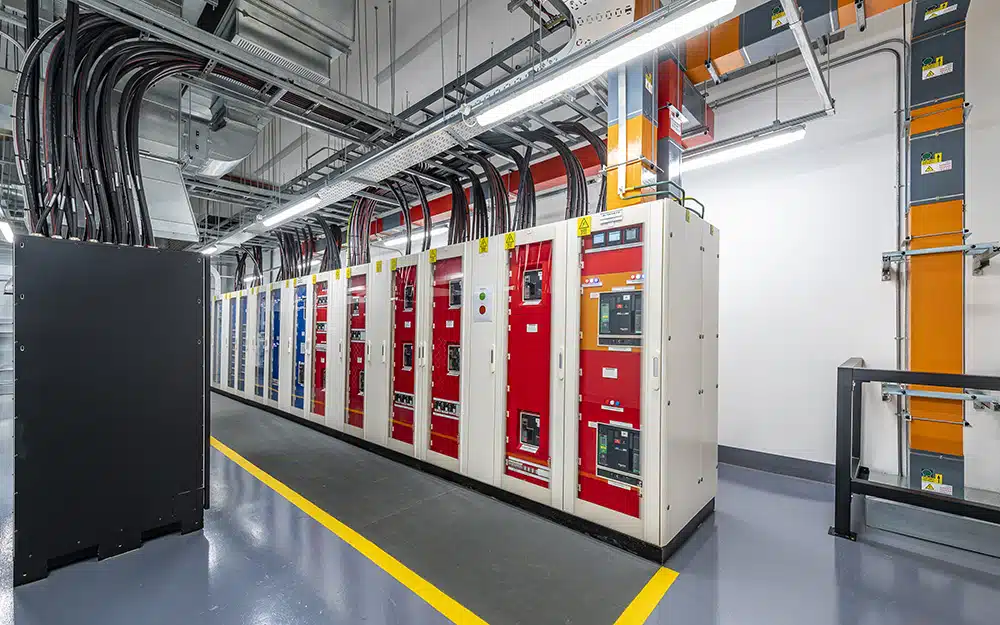Seun Lanlege and his co-founder, David Salami, went viral after Abayomi Semudara posted a video claiming they had raised $5.8 million, bought two flashy cars, and were spending $50,000 monthly on marketing their startup, Hyperbridge.
While the video — which is just a skit — might make Lanlege and Salami seem like vain founders splurging on luxury and hype, there’s far more to them, and to what they’re building.
In a continent where most blockchain and crypto startups focus on how to sell crypto for naira or make it easier to spend, Lanlege and his team are building a global blockchain infrastructure. One that took two years of deep research and complex mathematics — the kind that could make Sheldon from The Big Bang Theory giddy with excitement.
What does Hyperbridge even do?
Hyperbridge enables the seamless transfer of crypto assets from one blockchain to another. It sounds straightforward, but cross-chain movement is one of the toughest problems in blockchain technology.
Think of blockchains as railway tracks; you can send assets freely along a single track, but moving from one track to another isn’t so simple. If, for instance, you need to send crypto on the Ethereum blockchain but only hold assets on Solana, you’ll need a “bridge” to move those assets across.
If commercial banks were blockchains, it would be like struggling to transfer money from Access Bank to UBA. That’s the interoperability problem, and Lanlege says Hyperbridge is solving it by acting as an interoperability layer.
Speaking with Techpoint Africa at the Polytope Labs HQ — the research lab that birthed Hyperbridge — Lanlege explained that interoperability has long been one of blockchain’s biggest challenges. Ironically, as more blockchains are built, the issue grows worse.
As far back as 2020, the World Economic Forum described the lack of interoperability as a key reason blockchain was still unfit for enterprise adoption. Lanlege agrees. He describes the situation as a paradox: “As more blockchains are created within silos, the issue gets bigger, even though each chain might be more advanced and solves unique problems.”
“I see the discourse in the industry as a coin,” he said. “On one side, people are looking for solutions to scalability; on the other side, interoperability. We’re scaling, but if people on Polygon can’t do business with those on Tron, then we’ve recreated the exact problem we started with.”
That problem is the same one that Bitcoin originally sought to solve: a world where value can move freely and globally without barriers.
But as newer blockchains emerged to innovate on Bitcoin’s design, they also created new silos. And that’s the problem Hyperbridge is tackling head-on.
Why Hyperbridge is better than other blockchain bridges
Hyperbridge isn’t the first attempt to solve blockchain’s interoperability problem. The space has long attracted innovators and investors. The global blockchain bridge market, valued at $0.7 billion in 2024, is expected to reach $2.55 billion by 2029. Projects like Poly Network, Binance Bridge, and Wormhole Bridge have collectively moved billions of dollars in transactions. But despite their popularity, most of these bridges share one fatal flaw, one that Lanlege says Hyperbridge has finally solved.
“Existing bridges that have launched in a bid to unify blockchains have all been very flawed because they’re powered by a multisig,” Lanlege said.
Multisig, short for multi-signature, is the most common method for securing blockchain bridges. In a typical multisig setup, several people or computers hold private keys that control a shared pool of funds.
For any transaction to go through, a specific number of these keys — say, three out of five — must sign off. The idea is that splitting control among multiple signers makes the system safer since no one person can act alone.
But as Lanlege pointed out, this setup still depends on trust, and trust is the very thing blockchain was built to remove. “Multisig still relies on a few people doing the right thing,” he explained. “If you can compromise those people or the servers holding their keys, you can compromise the entire bridge.”
This isn’t theoretical. In 2021, the Poly Network bridge was hacked after its keys were compromised, leading to a $600 million loss, one of the largest heist in blockchain history. Two years later, another attack traced back to a compromised 3-of-4 multisig wallet, confirming that the flaw wasn’t in the idea of bridging, but in the multisig architecture itself.
The problem goes even deeper. Most existing bridges don’t actually “move” crypto across chains. Instead, they lock your tokens on one chain and issue you an IOU (I owe you) on another. Imagine if blockchains were banks that couldn’t send money directly to each other. The bridge would simply collect your funds at Fidelity Bank, note down that you now have a balance at UBA, and give you a claim slip.
That means hackers only need to breach one side of the setup — one of those “bank accounts” — to access everyone’s funds. It’s not truly interoperable, and it’s far from decentralised.
How Hyperbridge is bridging other blockchains
Hyperbridge’s answer to this problem is, as Lanlege put it, “maths and code.” It replaces human-controlled keys with cryptographic proofs and smart contracts, creating what he describes as “the first truly decentralised bridge.”
“Rather than people, we have smart contracts on different networks,” Lanlege explained. “They function as an inbox and outbox for messages. We have a decentralised network of relayers who take those messages and get them verified by the Hyperbridge blockchain.”
Here’s how it works. Every blockchain produces something called finality proofs, cryptographic evidence that a transaction is permanent and can’t be altered.
Hyperbridge’s network of relayers collects these proofs and verifies them on the Hyperbridge chain, ensuring that transfers between blockchains are validated without relying on human signers.
But Hyperbridge takes it a step further. It doesn’t just verify other blockchains’ proofs; it also generates its own, which must be verified externally. This bidirectional verification creates a feedback loop of security, a mathematical guarantee that every cross-chain transaction is valid on both ends.
“This is where we cracked the solution to scalable interoperability,” Lanlege said. “Anyone could have built this, but the reason they didn’t is because we were uniquely enabled by the Polkadot network.”
Polkadot, often described as the AWS of blockchain infrastructure, plays a crucial role here. It provides the validators that verify transactions for Hyperbridge. In return, Hyperbridge pays for what’s called Coretime, essentially computational power rented monthly.
“This dedicated Coretime allows the Hyperbridge protocol to distribute its massive verification workload,” Lanlege said.
In simpler terms, Polkadot gives Hyperbridge the computing muscle it needs to verify millions of cross-chain transactions securely and efficiently without trusting a single human.
Funding and traction
Hyperbridge has raised over $5 million — $2.5 million in its seed round and $2.8 million in a public sale. The seed round was led by the Polkadot Ecosystem Fund, a joint venture between the Web3 Foundation and Scytale Digital, a venture capital firm.
So far, Hyperbridge has verified 10.2 million finality proofs, saved 12.2 trillion in gas fees, and processed $92.4 million in transaction volume.
Upon launching its token, the market valued Hyperbridge at $70 million, a figure that later peaked at $200 million. Lanlege interprets that high market valuation as a reflection of “people’s trust, respect, and expectation for the platform to deliver value.”
In what is a major validation of the project, Polkadot DAO recently voted to make Hyperbridge the native bridge for the Polkadot network.
Maths, physics, and hiring geniuses
Lanlege often credits mathematics and physics as the reason “life on Earth is good.” His love for science began when, out of boredom, he started reading his aunt’s old textbooks. “I was mind-blown,” he recalled. “That was where my desire for knowledge-seeking started. I realised that maths isn’t some esoteric foreign language; it’s just simple concepts layered on top of each other. If you understand the fundamentals, you can go from there all the way to the top.”
Ironically, Lanlege didn’t always plan to be a blockchain engineer; he actually wanted to be a rapper. But while working at Trade Depot, some friends introduced him to Bitcoin, sparking his curiosity about crypto. True to form, he dove deep into research, quickly grasping the core principles of blockchain technology.
Before long, he became an open-source contributor to Polkadot, and when he asked for a job, “hiring me was a no-brainer,” he said. Since then, Lanlege has become one of the few African engineers building blockchain infrastructure at a global scale.
While most African blockchain startups focus on payments, on-ramps, or off-ramps, Hyperbridge stands out as a deep infrastructure protocol, something rare on the continent. It is noteworthy to mention other infrastructure builders like Zone and cNGN.
Building this level of technology comes with challenges, especially when it comes to hiring skilled engineers. Besides Lanlege and Salami, Hyperbridge currently has one engineer from India. When asked about developing a pipeline of local talent capable of building something like Hyperbridge, Lanlege was characteristically candid.
“People call it autistic,” he said, laughing, “but I like to do my own thing and be occupied with my own interests.”
Still, Hyperbridge has launched a boot camp to train blockchain engineers and has already hired a few graduates from it. However, Lanlege doesn’t believe genius can be manufactured.
Citing the example of Srinivasa Ramanujan, the self-taught Indian mathematician who stunned the world with his brilliance, he said: “You can’t make geniuses. People who will dazzle the world with their engineering skills will do it no matter the circumstance.”
Challenges and the future
Lanlege believes the toughest days of Hyperbridge are behind them. Most of the core infrastructure has now been built, and Hyperbridge currently supports 14 blockchains, including Ethereum, Base, and Avalanche.
Although much has been said about the startup spending $50,000 a month on marketing, Lanlege insists the protocol “speaks for itself.” “We don’t need to talk too much,” he said. “Technical blockchain founders can see the maths and understand why it works.”
Still, competition in the bridge space is fierce. Other protocols boast higher transaction volumes and continue to innovate rapidly. While Lanlege’s confidence in Hyperbridge’s mathematical foundations remain unshaken, it may only be a matter of time before other engineers with similar expertise rise to challenge his solution.











